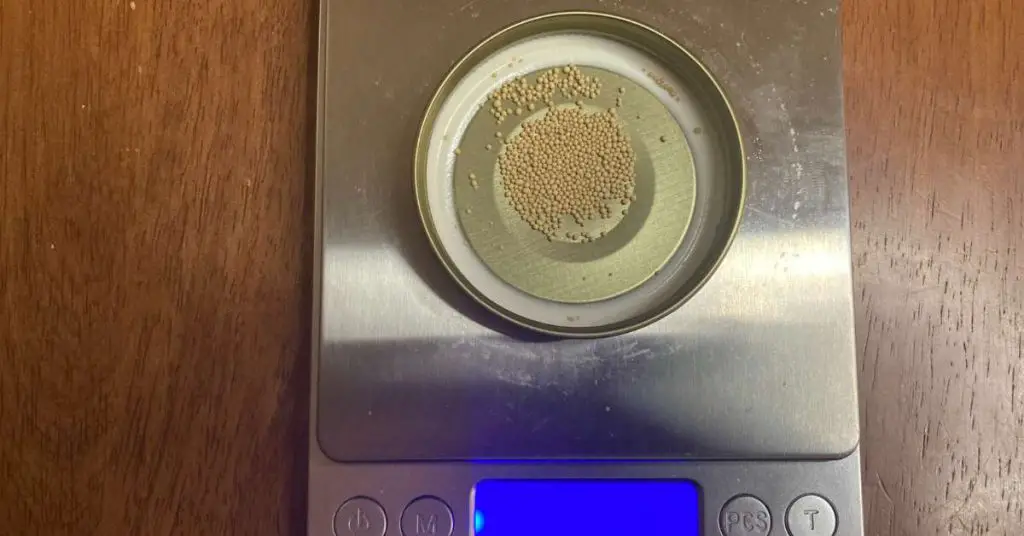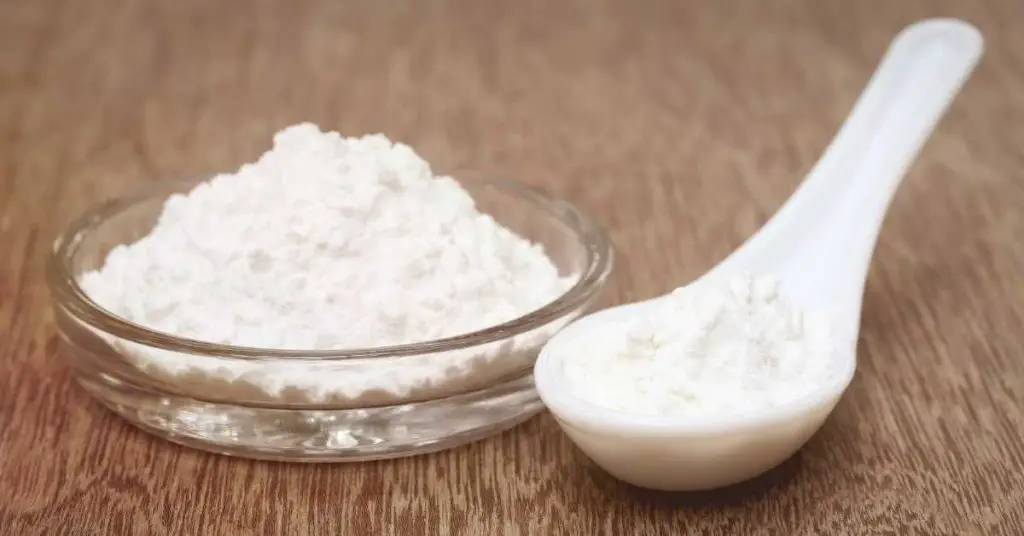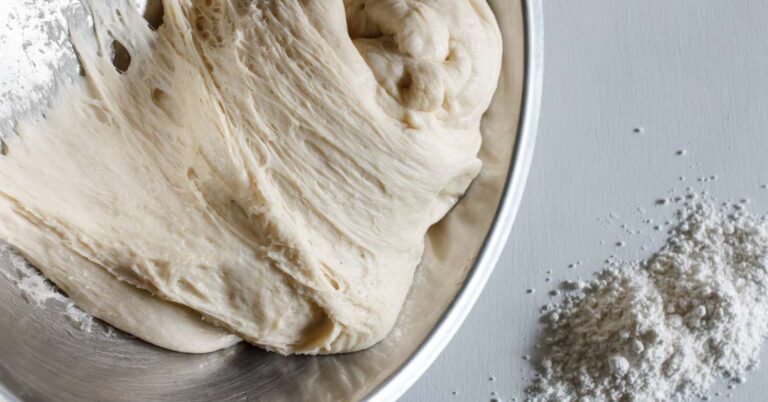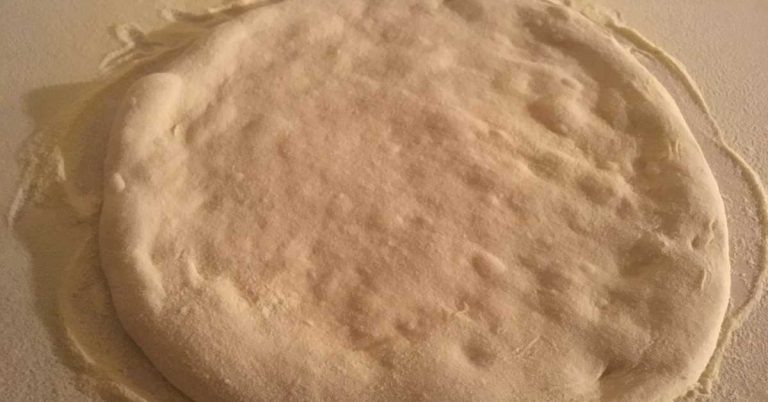Does Pizza Dough Need Yeast? Plus 2 Yeast Substitutes
The core ingredients of pizza dough are water, flour, salt and yeast. In most cases, this is the perfect combination as the flour and water create gluten while the yeast feeds on the flour to create gas.
This gas and gluten is what gives pizza crust the characteristically chewy and fluffy texture that we all love. Without these two things a pizza crust would more closely resemble a pancake than what we’re used to eating. But does pizza dough need yeast? Are there alternatives that can be used in its place?
To make a pizza dough that has all the recognizable features of high-quality pizza, yeast is almost always necessary. Without yeast, the pizza dough won’t rise or create the bubbles that give it a fluffy texture. Baking soda can sometimes be used in place of yeast to create gas, but your results will not be nearly as good as when using yeast.
Let’s go over what yeast does for pizza dough, why it’s normally necessary and a few things you can use as an alternative if you absolutely can’t get access to yeast. Also, be sure to check out my full instructions for making a quick homemade pizza dough here.

Why Pizza Dough Needs Yeast
There’s a reason why pizza dough, as well as countless other types of dough, use yeast as a primary ingredient. Yeast creates gas which expands when baked and gives pizza dough and bread the light and fluffy pockets of air we all enjoy. Without this gas, the pizza dough would bake into a dense and flat disc of gluten.
The way it works requires a basic understanding of chemistry. Yeast is not just another ingredient, it’s actually a living fungus that feeds on the other ingredients in the pizza dough, primarily the flour.
When the water and flour combine the yeast begins to convert the starches in the flour to sugar. When the yeast feeds on this sugar, it produces CO2 and alcohol as a byproduct. This is what makes the pizza rise and taste good.
This alcohol and CO2 effect the taste and texture of the pizza crust in a number of ways. First, the CO2, which is a gas, expands when exposed to high heat which creates the bubbles in pizza crust most people are familiar with. The alcohol, as well as other acids, affects the taste of the pizza crust, especially when fermented for over 24 hours.
So, besides the added taste, which is subjective, the really essential part of using yeast is the gas it creates which allows the pizza to crust to rise. What if you use another ingredients that creates gas?
Related Post: Should Pizza Dough Have Oil & Sugar?

Baking Powder Can Be Used In Place Of Yeast, But It Won’t Rise As Much
If you don’t have yeast, or can’t use it for whatever reason, you can use baking powder in its place. But keep in mind that your pizza dough won’t rise as much, and once it’s risen it won’t rise again.
This is because, again, yeast is a living organism that continually feeds on starches in the flour to produce C02 which makes dough rise slowly over time. Whereas baking powder mixed with water produces C02 all at once as a one off event.
If you do use baking powder as a yeast replacement, you’ll need to use the dough to make your pizza right away. If you wait, all the C02 gas will escape and the dough won’t rise at all when baking. Doing this will be as good as using flour and water alone.
Alternatively, you can use baking soda in place of baking powder but you’ll need to include something like yogurt in your dough since it needs an acid along with water to produce C02. This is because baking powder already includes a dried acid base along with baking soda.
This method can work well to make a simple, tasty pizza but don’t expect anything like a light, fluffy Neapolitan style pizza. Baking powder or baking soda pizza is best suited for a thinner crust pizza with the toppings going edge to edge since the crust can be a bit bland.

If You Don’t Have Yeast You Can Always Make Your Own (If You Have The Time)
If you don’t plan on having access to yeast for a long time, you can always grow your own. Thankfully, yeast is present all around us in very small amounts, even in the air we breathe. So you make your own by essentially harvesting it from the environment and giving it a good place to grow.
There’s lot’s of information about this online, so I won’t go into too much detail here, but basically this is done by creating a small dough starter and feeding it day by day.
What you do is mix flour and water in a 1 to 1 ratio, so for example 100g of flour and 100ml of water. You leave that at room temperature for 24 hours then remove half and add another 100g of flour and 100ml of water.
The next day, just repeat this process but do it every 12 hours instead.
As the days go by, you should begin to see your dough starter bubble up a bit and give off a yeasty or fruity smell. This could take 5-7 days depending on the ambient temperature of your room and a few other factors.
When the starter is ready to use it will float, so you can test this by tearing off a small piece and seeing if it will float in a glass of water. If it sinks, just keep on feeding it and try again the next day.
When your yeast starter is ready to be baked, you can just incorporate it into your pizza dough at a 50% ratio. In other words, half your dough will be starter and the other half will be flour, water, salt, etc. If your starter works, it will provide all the yeast your pizza dough needs to rise.
This method is essentially the same way sourdough is made, but it works just as well for pizza. But don’t try this one if you’re in a hurry, it’s more done simply for the joy of baking with something alive you made yourself.
Final Thoughts
Yeast is, for the most part, essential for a good pizza – at least, pizza as we commonly know it. And by this I mean a crust that is chewy with a nice gluten network as well as airy from all the gas created by the yeast.
But that doesn’t mean you can’t use alternatives, you just need to temper your expectations. A no-yeast pizza can be fluffy and light, but a dough much stronger than that won’t rise at all with just baking powder, so don’t expect much chewiness. It’s also going to taste just like flour, water and salt without all the acids and alcohols that yeast produces to give it a tangy flavor.
No-yeast pizza can still be tasty though, but I recommend keeping it thin and using spreading your toppings from edge to edge to minimize the bland crust.
And as a last resort, or just for some fun, you can grow your own yeast and bake an authentic sourdough pizza.






